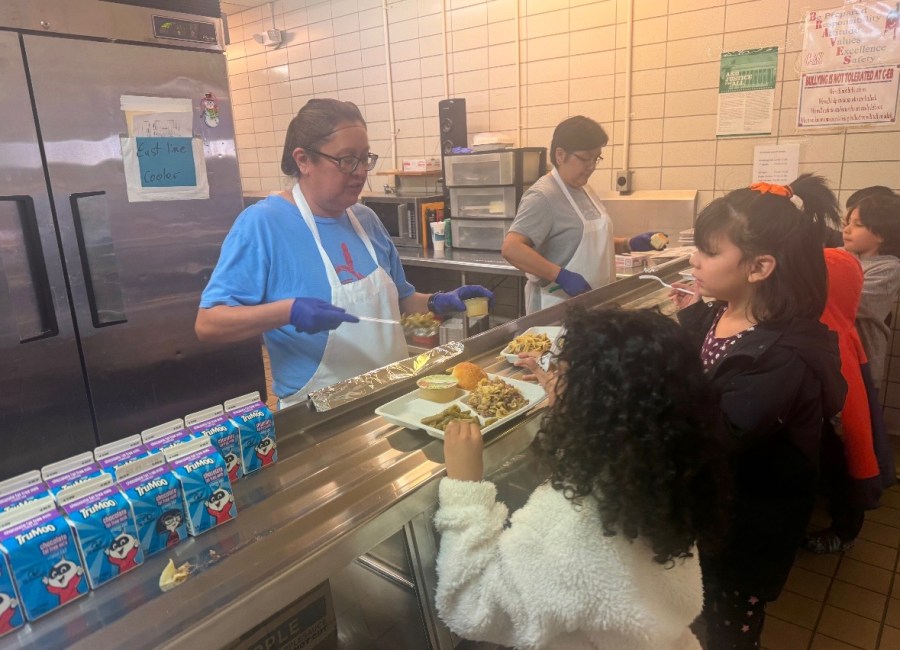SIOUX FALLS, S.D. (KELO) — On March 12, 2025, Cheyenne River Sioux Tribe Chairman Ryman LeBeau announced the Supper 4 Students program, a joint venture between the CRST Chairman’s Office and the Cheyenne-Eagle Butte Schools (CEB).
The program is hosted at the CEB Cafeteria and is open to all students in the district. With it’s launch, the school is now offering students three meals a day during the school week.
2 arrested in rape, abuse case
“Last week we went four days, but we’re going to be going Monday through Fridays, and we’re going to go until the end of the school year,” said Stacie Lee, Food Service Manager for CEB, who told KELOLAND she’d been there for 26 years.
So far, the program has been well utilized.
“We served roughly a hundred students a night, and 5-10 parents will come in and eat with them,” said Lee.
Given her years in her role, Lee has seen the impact food, or lack thereof, can have on students.
“I know there’s a lot of kids that go home and don’t receive a supper meal,” said Lee. “They don’t eat again until they come back for breakfast.”
Jennifer Bowman, Acting BIE School Supervisor for the CEB School, spoke more about why the program matters.
“I think as Lakota people, we are very compassionate people,” said Bowman. “That’s one of the things we really do consider when we’re serving our students, is how can we really help them better.”
Bowman said that when they were presented with the idea for the project, she and Lee jumped at the idea.
“One of the biggest things is, if we can make sure that our students are fed, it will help us more academically,” said Bowman. “There’s more to just feeding the students, and there’s more benefits to being able to provide these meals. I mean, it takes away that food insecurity because we will have those meals available for them.”
This, said Bowman, allows for boosted academic performance because kids can focus on learning instead of being hungry.
Where does the funding for a program like this come from?
“From the Tribe,” answered Lee.
CEB Supper ProgramCEB Supper ProgramCEB Supper Program
“That’s the really nice thing about the program,” added Bowman. “It’s fully funded by the Cheyenne River Tribal Chairman’s office — if you’re going to purchase for us, and we have to cook it, absolutely — we can do that.”
In addition to just feeding students, the program also seeks to incorporate what LeBeau in his announcement, called “traditional foods”.
“I try to use as much buffalo in my menus as I can,” Lee told KELOLAND. “I have gotten a lot of donations from our local buffalo program — the buffalo has way less fat and it’s a lot leaner than the ground beef.”
Lee and her staff are truly the heart of the program, which Bowman was quick to point out.
“I really do want to highlight Ms. Lee and her staff, as well as the program,” Bowman said. “If it wasn’t for them and the initiatives that we take on to be able to provide these types of activities to our communities, it would be impossible.”
Lee, as Food Service Manager, oversees a staff of 10, who together feed around 1,200 K-12 students five days a week.
Now doing three meals a day, Lee explained that the first shift comes in at 6:00 a.m. and leaves at 2:30 p.m., while the second shift arrives at 8:30 a.m. and is out at 5:00 p.m., though herself and two others, a cook and a kitchen helper stay for an additional two hours after the end of the regular shift to run the supper program.
That’s quite a bit of time dedicated to feeding students, but that’s also not all Lee does.
“I write grants for the fresh fruit and vegetable program,” Lee said. “It’s an elementary grant, so the younger K-6 — they get fresh fruit or vegetables before the school day ends.”
But that’s still not all.
“We also have a backpack program where we send food out to all students for the weekend. It’s a weekend backpack program,” said Lee.
Lee and her staff also work holidays, noted Bowman, hosting things such as Thanksgiving, Easter and Christmas dinners for the community.
Attendance of the supper program fluctuates day to day. Prior to the COVID-19 pandemic, the district had a state-funded supper program, and Lee said she bases the quantity of the food they prepare on that, and that little if any goes to waste.
“We never really went over 200,” said Lee of the past supper program. “I just do single serve — if I have anything leftover, it all goes to the shelters.”
Bowman says that the response from the public has been very positive.
“Those who are participating are extremely grateful,” Bowman said. “They feel very welcome when they come here.”
The supper program runs from 5-6:30 p.m.



